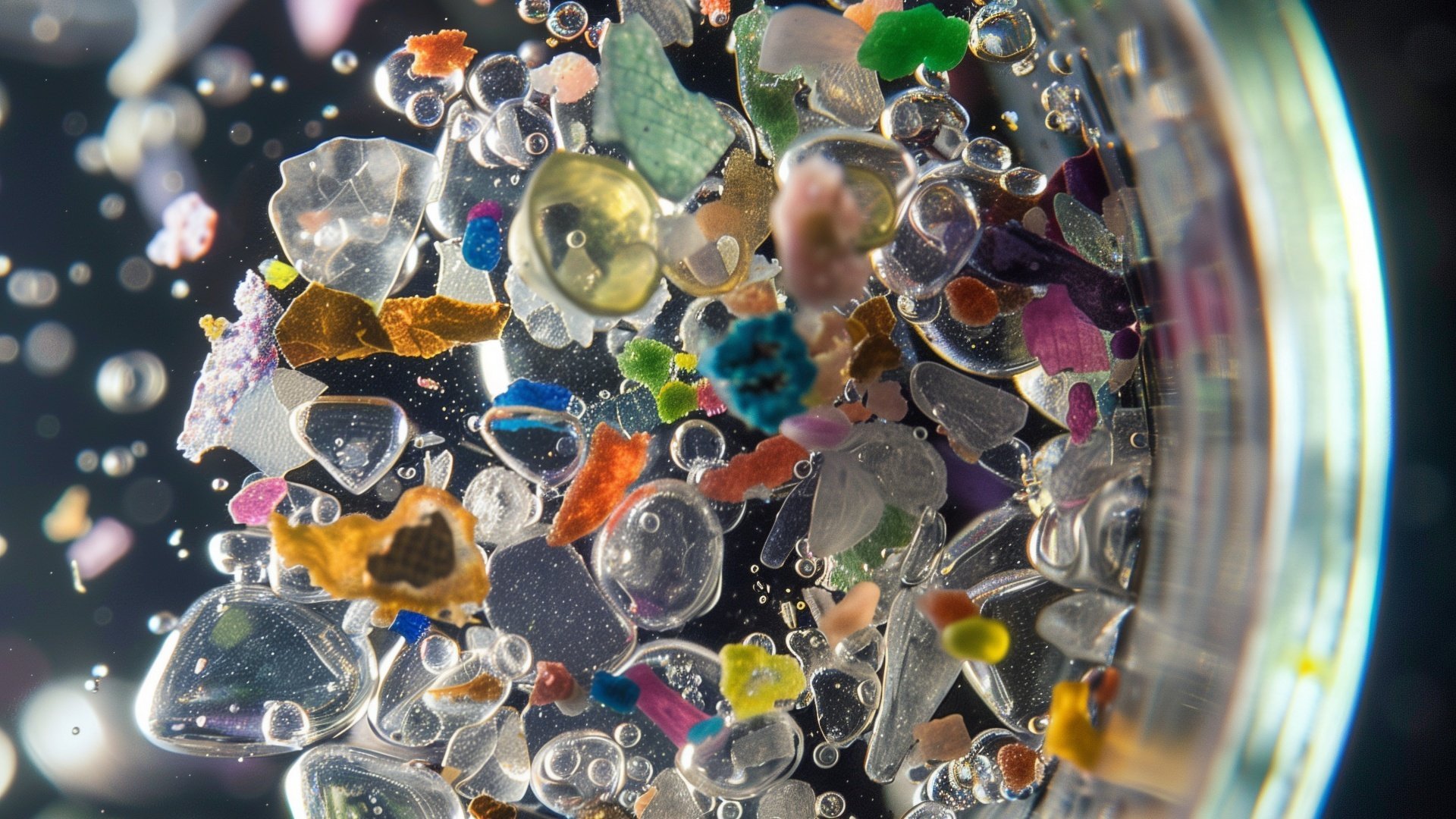Remove Harmful Nanoparticles from your Drinking Water using Graphene Membranes
8 April 2024

Microscope photo of microplastics
Plastic particles have been found across the globe, from wastewater and marine environments to freshwater systems. Microplastics (MPs), which are solid plastic particles ranging in diameter from 1 μm to 5 mm, have been identified in potable water sources, including both tap and bottled water intended for human consumption.
Nanoplastics (NPs), which are solid plastic particles smaller than 1 μm and down to nm size, are found in aquatic environments and pose significant challenges in reliable detection. Analytical methods for NPs are still under development. Various plastics like polystyrene, nylon, or polyethylene terephthalate break down to produce NPs. It is believed that the degradation of larger plastic items leads to the generation of microplastics, which further degrade into NPs.
According to findings from The New England Journal of Medicine, both MPs and NPs are emerging as potential risk factors for cardiovascular disease in preclinical studies. Patients who exhibited carotid artery plaque with detected MPs and NPs faced a greater risk of experiencing a composite of myocardial infarction, stroke, or death from any cause after a 34-month follow-up compared to those without detected MPs and NPs (source)
How can we ensure that we’re not consuming MPs and NPs through the water we drink? Filtration presents the most apparent solution, with both reverse osmosis (RO) and nanofiltration (NF) proving effective as they can filter down to NP size, thus excluding NPs. However, these filters also strip away essential salts such as magnesium and calcium, result in significant water wastage, and consume substantial amounts of energy.
Nanoplastics are probably much more dangerous for living organisms than microplastics because they are more abundant and reactive. They can potentially reach more remote locations and penetrate living cells. (source)

Image source – https://www.thelancet.com/journals/ebiom/article/PIIS2352-3964%2823%2900467-X/fulltext#secsectitle0040
NPs are poised to become the next PFAS or asbestos. Water authorities and bottled water providers will face significant exposure to widespread insurance claims once a cause-effect relationship has been clearly established.
NematiQ, a subsidiary of Clean TeQ Water, has engineered a Graphene Membrane capable of filtering particles as small as 1nm (equivalent to one billionth of a meter), effectively eliminating all NPs and MPs while retaining beneficial salts. Remarkably, this technology consumes less than 50% of the energy required by RO and NF methods, while nearly all the water is recovered in the process.
Graphene Membrane modules are available for water treatment for removal of NPs and MPs alongside other naturally occurring organic contaminants ensuring water purity.
Contact us to discuss micro and nanoplastics removal from water and wastewater.